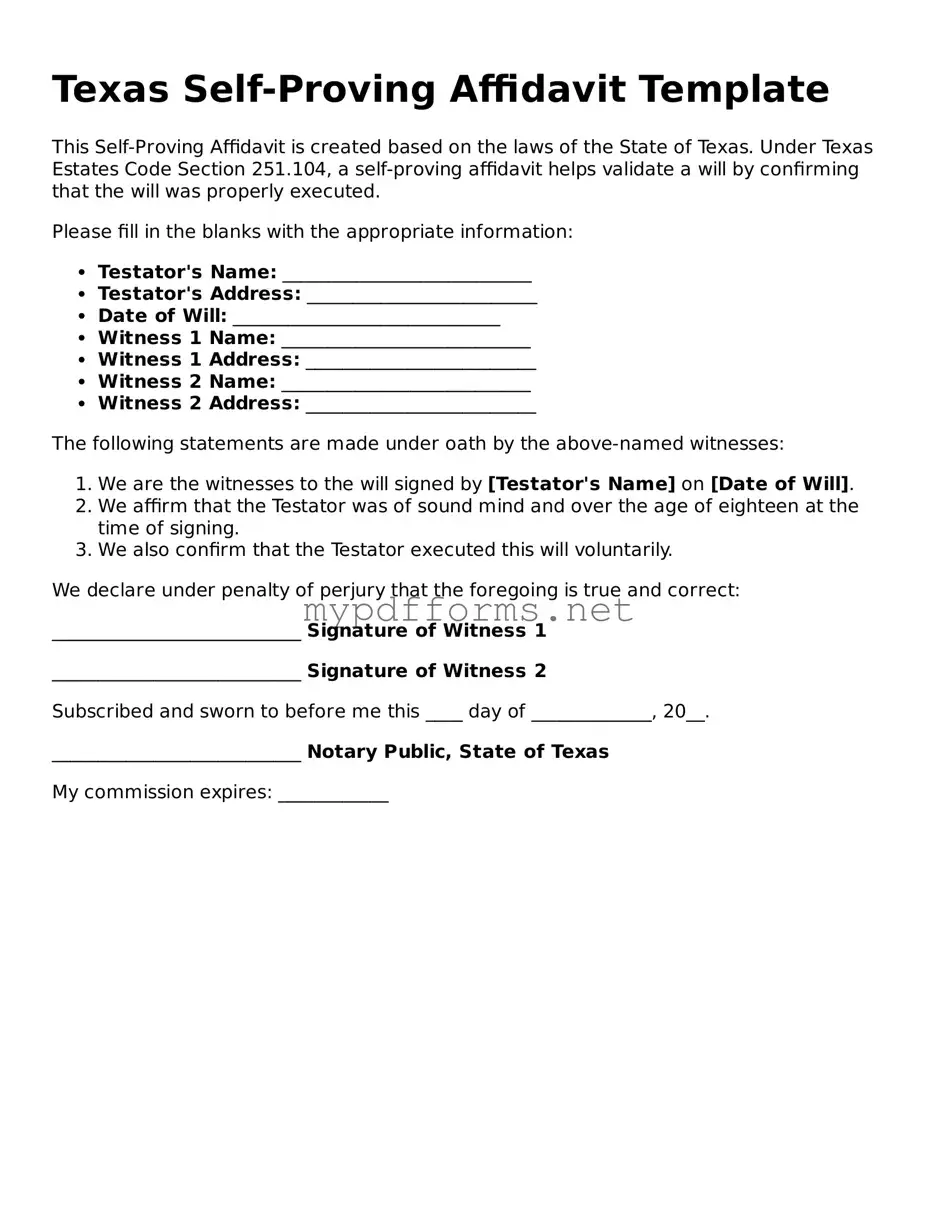The Texas Self-Proving Affidavit is similar to the Affidavit of Execution. This document is often used in estate planning to confirm that a will was properly signed by the testator and witnessed by others. Both documents serve to authenticate the will, but the Self-Proving Affidavit goes a step further by allowing the will to be admitted to probate without the witnesses having to testify in court. This can simplify the process and save time for the family during a difficult period.
Another document similar to the Texas Self-Proving Affidavit is the Will. A will outlines how a person wishes to distribute their assets after death. While the will itself does not prove its validity, the Self-Proving Affidavit can be attached to it, enhancing its credibility. This pairing helps ensure that the deceased’s wishes are carried out smoothly, without unnecessary legal challenges.
The Durable Power of Attorney shares similarities with the Self-Proving Affidavit in terms of authority and intent. Both documents require signatures and can be notarized to confirm their validity. However, the Durable Power of Attorney grants someone the ability to act on another's behalf, while the Self-Proving Affidavit focuses solely on validating a will.
Next, the Living Will is akin to the Self-Proving Affidavit in that both documents address a person's wishes regarding their future. A Living Will outlines medical preferences, while the Self-Proving Affidavit pertains to asset distribution. Each serves to clarify intentions, but they apply to different aspects of life and death planning.
The Trust Agreement can also be compared to the Self-Proving Affidavit. A Trust Agreement outlines how a person’s assets will be managed during their lifetime and after their death. While a Self-Proving Affidavit ensures a will's validity, a Trust Agreement can help avoid probate altogether. Both documents provide peace of mind regarding asset management, but they operate in different ways.
The Affidavit of Heirship is another related document. This affidavit is used to establish the heirs of a deceased person when there is no will. Similar to the Self-Proving Affidavit, it provides a sworn statement that can help clarify the distribution of assets. However, it is used in intestate situations, whereas the Self-Proving Affidavit is used with a will.
In conjunction with various legal documents that ensure clarity and intention, the Durable Power of Attorney form is particularly significant as it allows an individual to appoint someone to manage their affairs during their lifetime. For those interested in preparing this important document, resources like Illinois Forms can provide guidance and access to the necessary forms.
The Certificate of Trust is also comparable. This document serves as proof of the existence of a trust and outlines its terms. Like the Self-Proving Affidavit, it can streamline legal processes, but it focuses on trusts rather than wills. Both documents can help avoid lengthy probate proceedings, but they pertain to different legal instruments.
Finally, the Codicil is similar in that it modifies an existing will. A Codicil must be executed with the same formalities as a will, including witnessing and notarization. The Self-Proving Affidavit can accompany a Codicil to simplify the probate process, ensuring that any changes to the will are recognized without additional testimony from witnesses.
